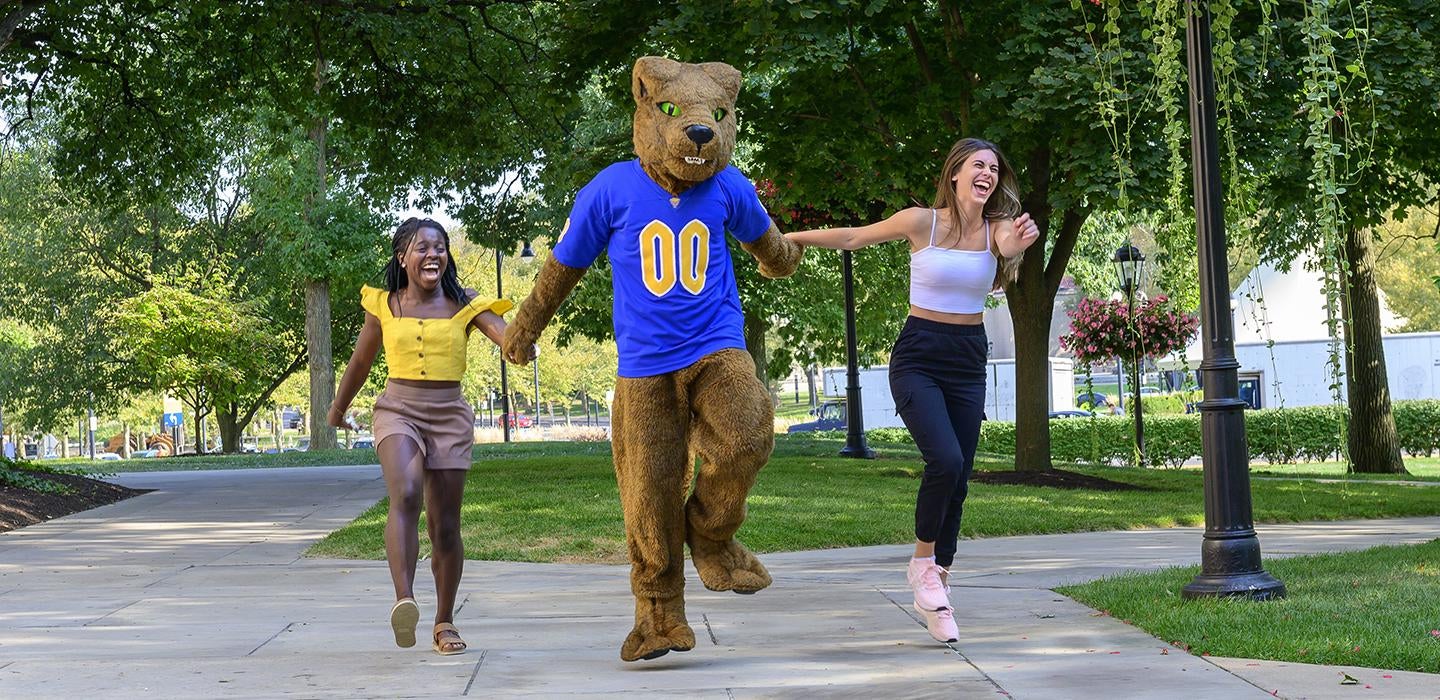
Subscribe to Pittwire Today
Get the most interesting and important stories from the University of Pittsburgh.What do you get the cat who has everything?
Nov. 16, 2021, marks the 112th birthday of Roc the panther, Pitt’s beloved mascot. Pittwire staff thought long and hard about the perfect gift, and we finally came up with something fitting: more panthers.
Panthers, also known as mountain lions, have been missing from Pennsylvania’s woods for nearly a century and a half, driven to local extinction by hunting and encroaching development. We asked an expert on the ecology of Pennsylvania’s forests to tell us what it would take to get them back. Pitt pride, it turns out, isn’t the only reason we might want panthers roaming the commonwealth again.
“I think it’d be super exciting, and I’d love to see it,” said Walter Carson, an associate professor of biology in the Kenneth P. Dietrich School of Arts and Sciences who coincidentally shares Roc’s Nov. 16th birthday.
Carson is an expert on Pennsylvania’s woods, having spent decades studying forest ecology, including how deer change the composition of forests. In the absence of predators like mountain lions, he said, deer populations have exploded.
“Now we have lax game management, we have restrictions on hunting, we have no big carnivores,” Carson said. The upshot is that deer numbers are seven to 10 times what they were historically.
There’s an economic and safety impact of that boom — Pennsylvania is third in the country for deer collisions with cars, Carson said — and beyond that, deer have a profound effect on the plant life of the state’s forests.
“It’s a direct threat to conservation, because all they do is eat, 365 days a year,” Carson said. “90% of the plant species in the eastern U.S. are shrubs or herbs, and they can’t grow through the deer filter.” Neither can some young trees, slowing the recovery of forests.
Read more about Pitt’s efforts to restore the region’s tree canopy.
Historically, wolves and panthers kept deer populations under control, but it doesn’t even take killing a deer to have an impact. When they think they’re in the presence of predators, deer spend more time looking for threats — and less time eating anything they can get their hooves on.
Given all that, maybe it shouldn’t be such a tough sell to reintroduce panthers to the region. It’d be far from the most ambitious rewilding project in recent memory, especially when compared to efforts underway to put genetically modified wooly mammoths in the Arctic tundra. But the barriers are many and formidable.
Hunters and the Pennsylvania Game Commission, Carson said, both oppose reintroducing large carnivores. Rising wolf populations elsewhere have proved controversial, including in Michigan and Wisconsin. And that’s for a predator that, unlike panthers, almost never attacks humans.
“They finally have predators that can have an impact on browsers like deer,” said Carson. “And yet the state agencies want to get rid of them.”
Another challenge, he said, is that unlike the western U.S., most of the land in the east is privately owned. That creates even more headaches for anyone who wants to see panthers in Pennsylvania.
“Imagine,” said Carson, “Knock, knock, knock. Hey, Mrs. Smith. Just so you know, we released mountain lions and wolves here, so you tell little Julie and Johnny they shouldn’t go too far from the house.”
So maybe convincing parents is a long shot. As an ecologist, though, Carson paints a compelling picture of a Pennsylvania with panthers.
“I think one of the coolest things is that we have an intact carnivore fauna now, except for wolves and mountain lions,” he said. “There are coyotes and bobcats and black bear and bald eagles. And those populations are all very healthy. So [wolves and panthers] are the last two things to recreate the fauna that was here before European settlement.”
Unfortunately for forest ecologists — and for big cat mascots looking for a friend — it might be a long wait.
— Patrick Monahan
This story has been updated.


